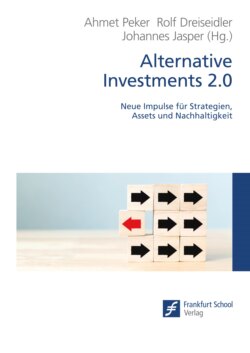Читать книгу Alternative Investments 2.0 - Группа авторов - Страница 28
На сайте Литреса книга снята с продажи.
2.2.5 Outlook
ОглавлениеThe rise of corporate direct lending may have coincided with perhaps the longest economic recovery ever, but this success is here to last. Even though it is too early to gauge the consequences of the COVID-19 outbreak on direct lending, we believe the asset class will continue to capture market share from banks for several reasons:
Continued bank disintermediation: Traditional banks appear likely to continue focusing on large corporations, shying away from borrowers at the lower end of the market. This allows direct lenders to remain focused on small and middle markets, prolonging the trend of banking disintermediation.
Direct lenders’ ability to execute larger transactions: As GPs raise more capital, they will eventually compete with the leveraged loan market for larger deals. In Europe, we have already seen some GPs pursue billion-euro transactions.
Sponsor preferences for direct lenders: As previously stated, direct lenders can offer more flexible terms than traditional lenders. Private equity GPs have taken note and increasingly turn to credit managers to finance acquisition bids. Direct lenders also know borrowers more thoroughly than banks do, gaining greater insight into each borrower’s idiosyncrasies as a result. In this way, direct lenders are better able to help private equity GPs recapitalize their portfolio companies if needed.
Non-dilutive growth capital: Family- and founder-run businesses are gradually developing an appreciation for private debt. They used to view direct lending as just a more expensive lending solution but have come to regard it as a non-dilutive source of capital to increase valuation to an exit.
Migration of talent: During private debt’s rapid maturation, there has been a gradual shift of talent from banks to debt funds. We believe this trend will continue, further undermining banks’ ability to compete for market share.
